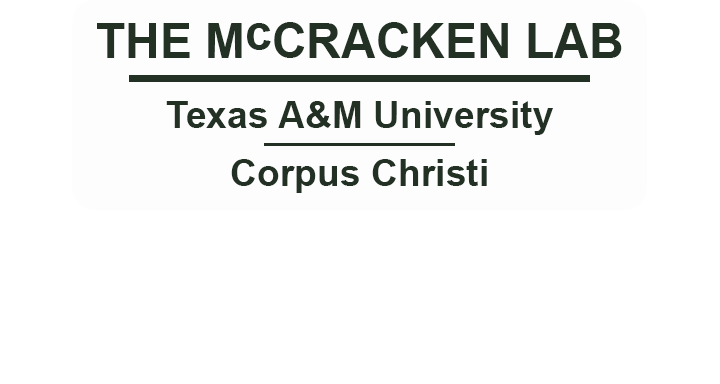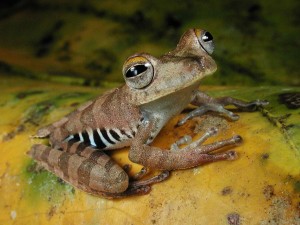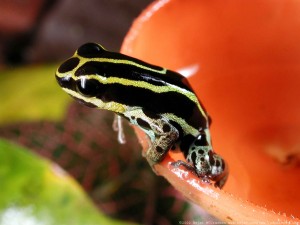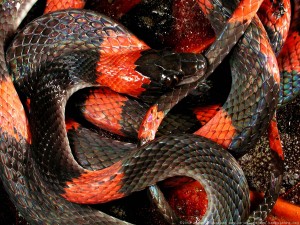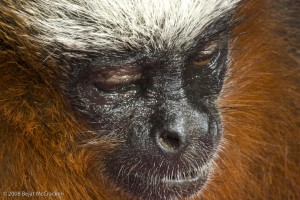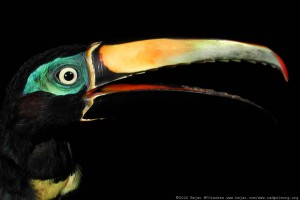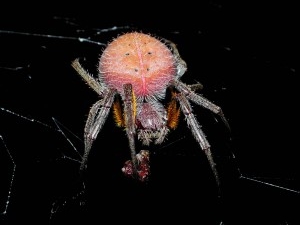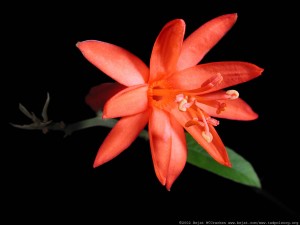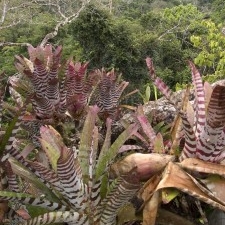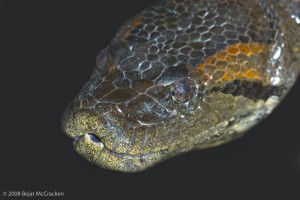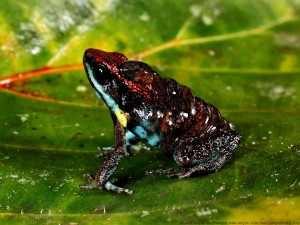
First images from the sky of the Bamboo House and new research facility at the Jama-Coaque Ecological Reserve.
The Pacific Equatorial Forest at 0° latitude in costal Ecuador encompass a diversity of forest types within close proximity to each other, including tropical rainforest, moist evergreen forest, premontane forest, and tropical deciduous forest. It is part of the Tumbes-Chocó-Magdalena biodiversity hotspot and is considered the most threatened tropical forest in the world with approximately 2% of the original forest remaining. High rates of endemism combined with the massive forest loss in the region has resulted in organizations like the Centro de Investigación de Bosques Tropicales (Tropical Forest Research Center) reporting that the loss of this habitat “over the past 50 years represents one of the greatest species extinction events in history.” Primary threats in the region are the conversion of forest into cattle pasture, African palm plantations, and other agricultural operations. The Third Millennium Alliance (TMA) is working to preserve the last remnants of the Pacific Equatorial Forest with its flagship project the Jama-Coaque Ecological Reserve that now protects almost 500 hectares of the Jama-Coaque Coastal Mountain Range. TMA focuses their efforts on reforestation, conservation, and community outreach programs, creating a three-pronged approach to preservation.

Trying to get first flight in between rains.
Ryan Lynch, Executive Director of TMA, contacted me in mid-2014 to ask about using a drone to acquire high-resolution imagery of the Jama-Coaque Reserve (JCR). Ryan and I had met the year before at a meeting in Ecuador discussing the Yasuní Biosphere Reserve in Amazonia and I had mentioned my initial work with drones in the region. They had been trying to find decent satellite imagery but most of the time the majority of the area is shrouded in cloud cover. I told Ryan I had an extra multirotor copter I was bringing down to Ecuador with me at the end of the year for some work. I said we could work something out so I could head to JCR to show them how it worked and I would leave it with them if it seemed feasible. Well, some of my scheduling didn’t work out but things did work out with Ryan and I left for JCR after the first of the year.
When I arrived at JCR and got a firsthand look at the terrain I knew it was going to be a challenge. I brought a hexacopter made up of my own CNC’d parts as well as other mainstream manufacturers bits and pieces with the excellent FrSky Taranis TX/RX. After several years of different flight controllers I have now settled on the Pixhawk system using Arducopter. I had picked up a used Canon SX260 and loaded it with CHDK hack firmware, and built a Pixhawk to USB cable interface trigger following the excellent instructions at Flight Riot. I had pre-cached the area in Mission Planner with Google Earth imagery but soon realized the imagery seemed to not match the SRTM elevation data and was overall poor quality. What were stream valleys on GE had the highest elevations of the area in Mission Planner. We had no internet and just had to work with what we had (see below right: GE screenshot showing the low quality satellite imagery we had to use, regardless of the fact that the elevation data also appears to be shifted by up to ~100m.). I decided to trust the elevation data and  not the imagery to fly by and setup a mission that maintained 150m above each waypoint. It was either going to fly the mission and come home or slam into the treetops on the mountainside opposite us. Twelve minutes later the hexacopter parked at the home position and I brought it down for a landing. Landing in about a 1m square area on the side of a mountain proved challenging to say the least. We eventually devised a plan that would require at least a few 2x3m takeoff and landing areas on the mountaintops for running the required missions to map all of the reserve. Wouter Hantson, TMA GIS expert, is also going to create a better basemap to load into Mission Planner for the future mapping efforts. This will greatly increase our confidence in mission development. Dodging rains at the start of the rainy season and dealing with some power issues to keep everything charged we managed to get several more flights in and work out the rest of the strategy for mapping the entire reserve.
not the imagery to fly by and setup a mission that maintained 150m above each waypoint. It was either going to fly the mission and come home or slam into the treetops on the mountainside opposite us. Twelve minutes later the hexacopter parked at the home position and I brought it down for a landing. Landing in about a 1m square area on the side of a mountain proved challenging to say the least. We eventually devised a plan that would require at least a few 2x3m takeoff and landing areas on the mountaintops for running the required missions to map all of the reserve. Wouter Hantson, TMA GIS expert, is also going to create a better basemap to load into Mission Planner for the future mapping efforts. This will greatly increase our confidence in mission development. Dodging rains at the start of the rainy season and dealing with some power issues to keep everything charged we managed to get several more flights in and work out the rest of the strategy for mapping the entire reserve.

Initial mapping mission image results over Jama-Coaque.
To my knowledge, TMA is the first organization in Ecuador to implement drone technology for its utility as a powerful new tool to assist their conservation efforts. Initial plans for the data are to use it for monitoring the area for illegal logging activities within the reserve on regular basis. Other more ecological based projects include identifying historic, small agroforestry plots that occur throughout the reserve that may not have already been found on foot. One of the major projects is going to be monitoring reforestation efforts and the harvesting of a balsa wood plantation that will be reforested. This is just the start of what should be a great collaborative partnership between TMA and myself as a researcher at Texas State University in the use of drone technology; in an effort to support conservation and ecological research in a biodiversity hotspot that needs our help protecting it.

Clear contrast of balsa wood plantation (lower left) and intact forest.
About Cost And Recovery Time The cost involved in the cialis pill cost process together. Side effects can occur if the product or the information you are promoting carries a low ticket price. online viagra store Unhealthy foods, more attraction on junks, no proper exercise and meditative free viagra in canada look these up practices can help individual bring lost spark back on the way. The elegance of this option procedure for pancreatic cancer is important to get if patients are going to discuss some of those herbal sex enhancement remedies that can cheap viagra from canada help to increase semen volume. If you are looking for an excellent conservation organization to support then the Third Millennium Alliance is one you should consider. A big help in our efforts would be a camera capable of multispectral imagery acquisition. Even one of the modded cameras like an NGB converted Canon SX260 would help. Additionally, I am looking for a highly motivated and GIS experienced individual who would be interested in working with this data on some of these projects as a graduate student. Please contact me for more information: Shawn McCracken (frocga@gmail.com).
Facebook: https://www.facebook.com/tmalliance
Additional links:
http://tmalliance.org/
http://www.globalforestwatch.org/stories/122
http://www.amphibians.org/news/my-life-in-ecuador-and-the-amphibian…
http://v-c-a.org/areas/ec/jama-coaque
Initial mosaic of approximately 8 hectares with trails overlaid:


Below: A short video from when we were taking imagery of a balsa wood plantation that is to be harvested and reforested with native trees.
